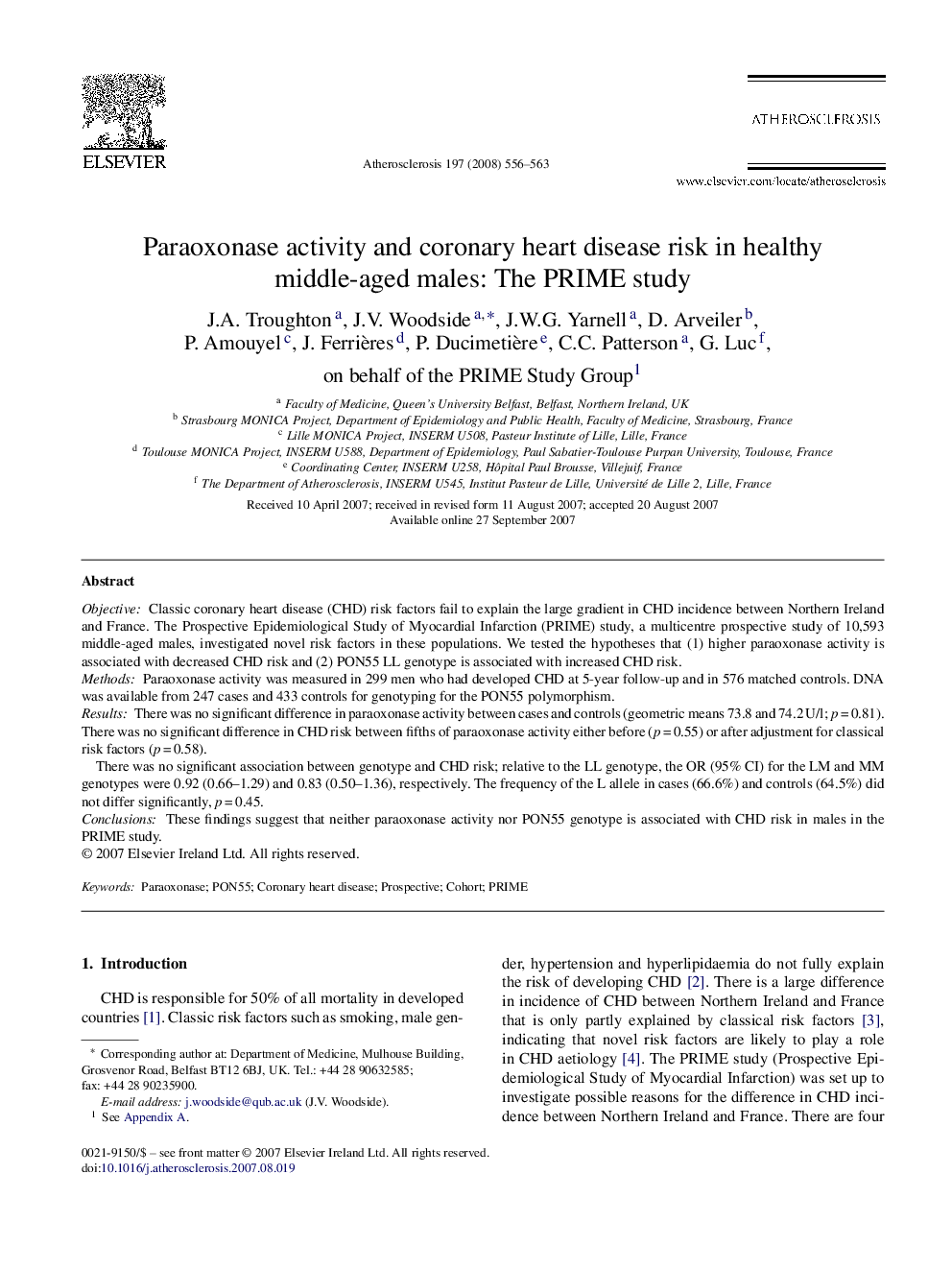| Article ID | Journal | Published Year | Pages | File Type |
|---|---|---|---|---|
| 5951614 | Atherosclerosis | 2008 | 8 Pages |
ObjectiveClassic coronary heart disease (CHD) risk factors fail to explain the large gradient in CHD incidence between Northern Ireland and France. The Prospective Epidemiological Study of Myocardial Infarction (PRIME) study, a multicentre prospective study of 10,593 middle-aged males, investigated novel risk factors in these populations. We tested the hypotheses that (1) higher paraoxonase activity is associated with decreased CHD risk and (2) PON55 LL genotype is associated with increased CHD risk.MethodsParaoxonase activity was measured in 299 men who had developed CHD at 5-year follow-up and in 576 matched controls. DNA was available from 247 cases and 433 controls for genotyping for the PON55 polymorphism.ResultsThere was no significant difference in paraoxonase activity between cases and controls (geometric means 73.8 and 74.2 U/l; p = 0.81). There was no significant difference in CHD risk between fifths of paraoxonase activity either before (p = 0.55) or after adjustment for classical risk factors (p = 0.58).There was no significant association between genotype and CHD risk; relative to the LL genotype, the OR (95% CI) for the LM and MM genotypes were 0.92 (0.66-1.29) and 0.83 (0.50-1.36), respectively. The frequency of the L allele in cases (66.6%) and controls (64.5%) did not differ significantly, p = 0.45.ConclusionsThese findings suggest that neither paraoxonase activity nor PON55 genotype is associated with CHD risk in males in the PRIME study.
